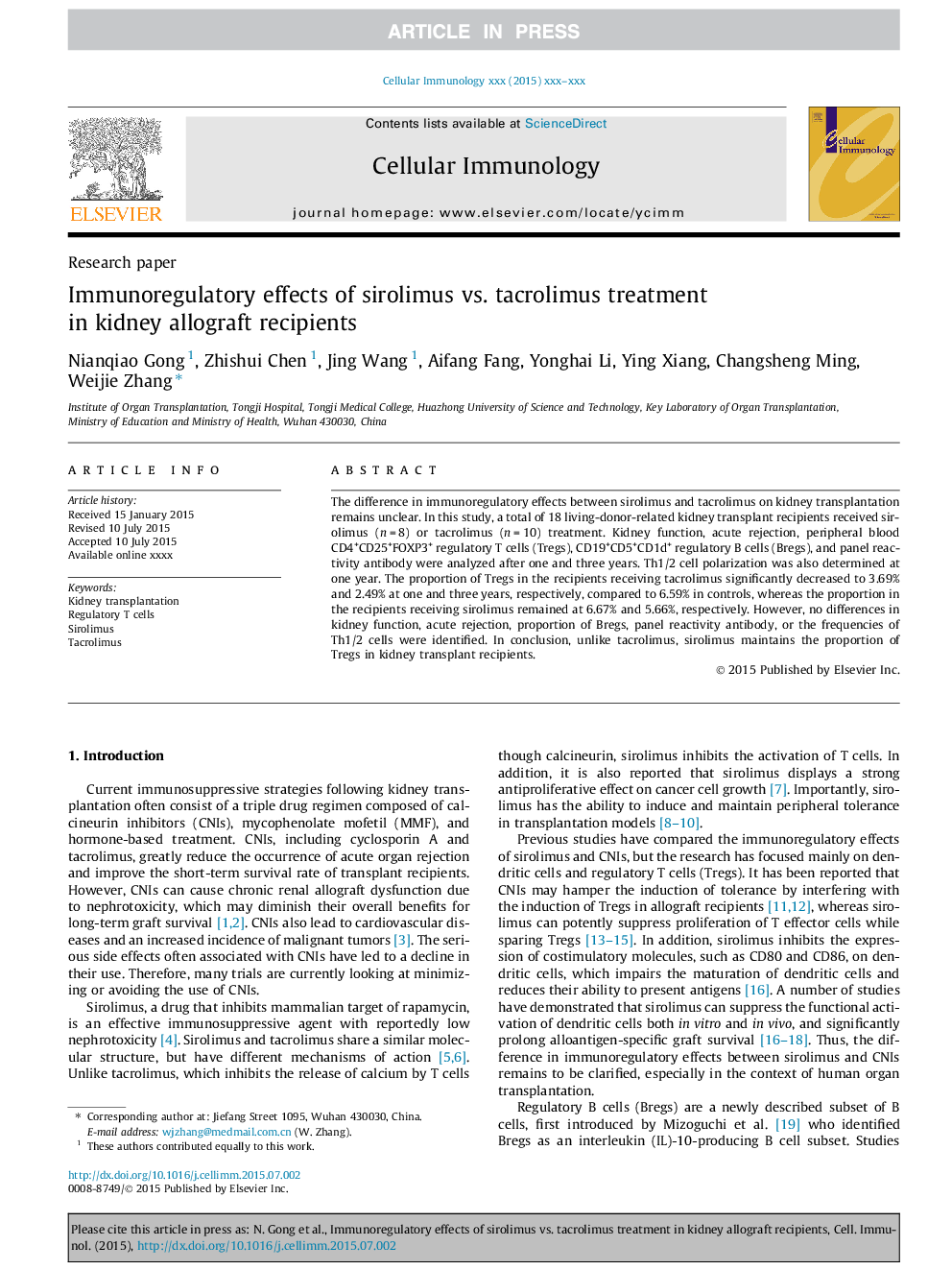| Article ID | Journal | Published Year | Pages | File Type |
|---|---|---|---|---|
| 10926972 | Cellular Immunology | 2015 | 7 Pages |
Abstract
The difference in immunoregulatory effects between sirolimus and tacrolimus on kidney transplantation remains unclear. In this study, a total of 18 living-donor-related kidney transplant recipients received sirolimus (n = 8) or tacrolimus (n = 10) treatment. Kidney function, acute rejection, peripheral blood CD4+CD25+FOXP3+ regulatory T cells (Tregs), CD19+CD5+CD1d+ regulatory B cells (Bregs), and panel reactivity antibody were analyzed after one and three years. Th1/2 cell polarization was also determined at one year. The proportion of Tregs in the recipients receiving tacrolimus significantly decreased to 3.69% and 2.49% at one and three years, respectively, compared to 6.59% in controls, whereas the proportion in the recipients receiving sirolimus remained at 6.67% and 5.66%, respectively. However, no differences in kidney function, acute rejection, proportion of Bregs, panel reactivity antibody, or the frequencies of Th1/2 cells were identified. In conclusion, unlike tacrolimus, sirolimus maintains the proportion of Tregs in kidney transplant recipients.
Related Topics
Life Sciences
Biochemistry, Genetics and Molecular Biology
Cell Biology
Authors
Nianqiao Gong, Zhishui Chen, Jing Wang, Aifang Fang, Yonghai Li, Ying Xiang, Changsheng Ming, Weijie Zhang,
